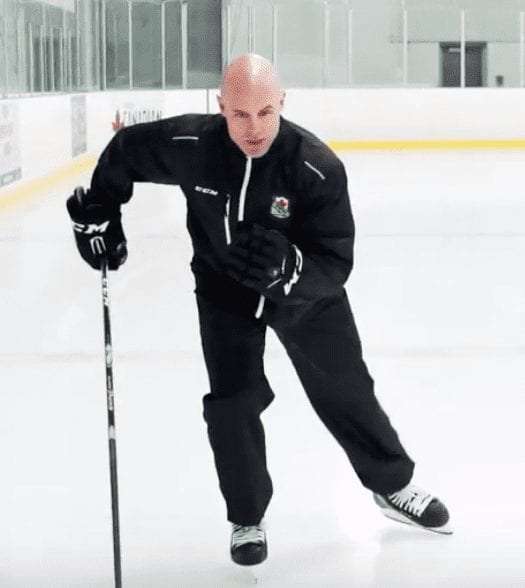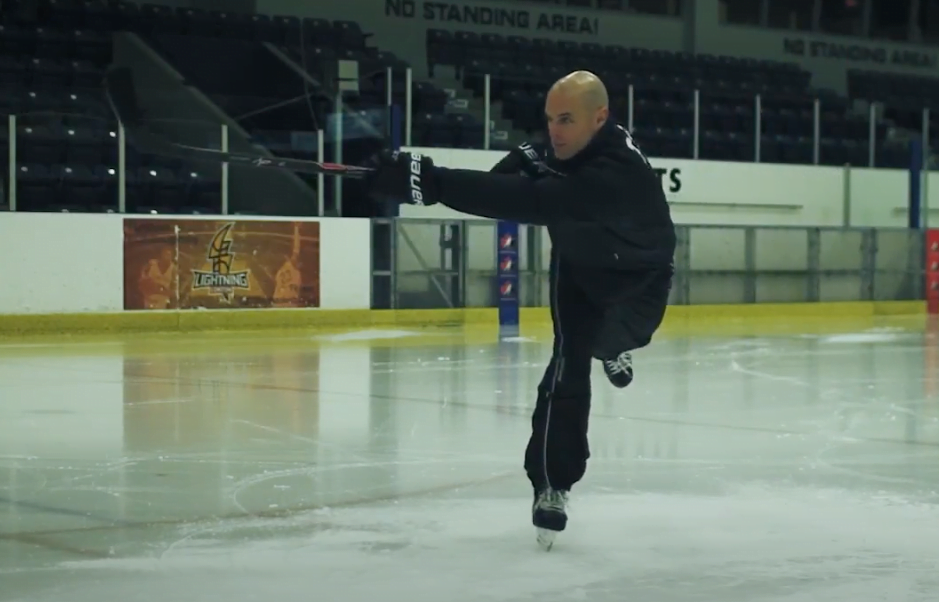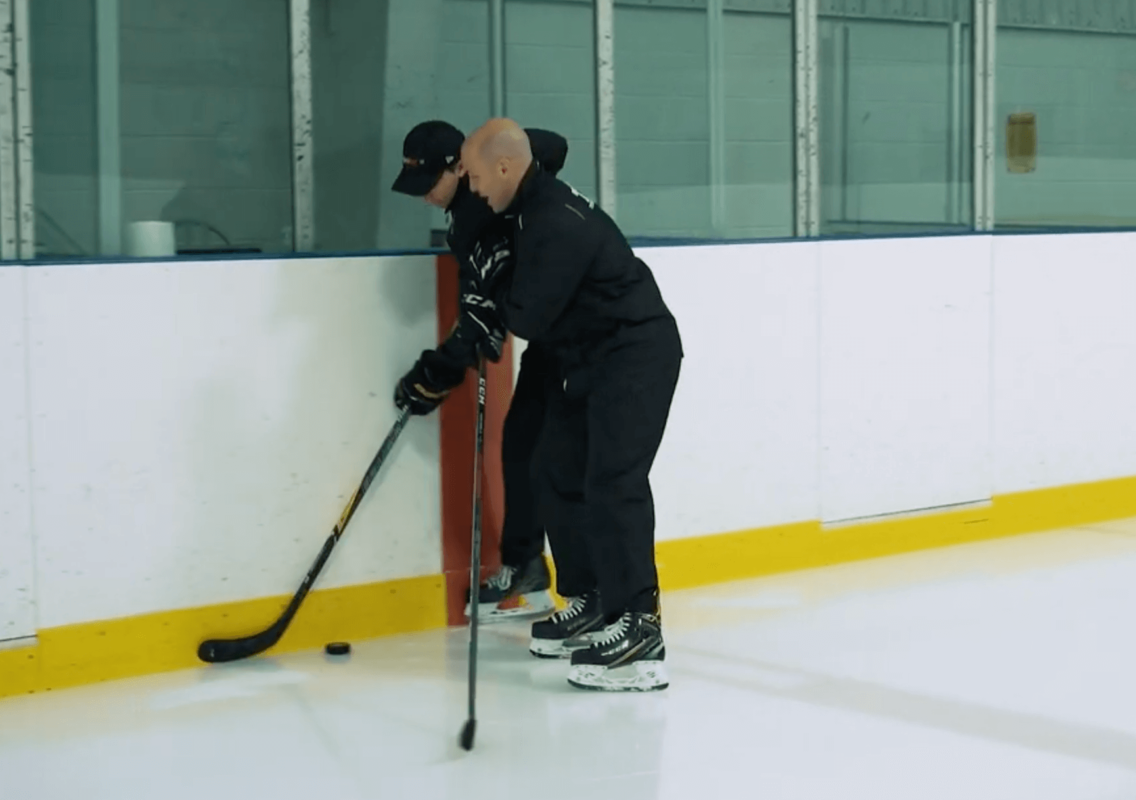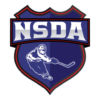Introduction
Hockey is a fast-paced, physically demanding, and strategic game. To excel, a player needs a combination of athletic ability, endurance, strategic thinking, and specific skills related to hockey. This comprehensive guide will provide an overview of essential hockey skills and some effective ways to develop and improve them.
Estimated reading time: 18 minutes
Table of contents
Hockey Skills Overview
Skating Skill Development

Hockey is unique because it’s played on ice, and that means excellent skating skills are a must. This includes speed, agility, strength, and balance. Mastering forward and backward strides, tight turns, stops, crossovers, and pivots is crucial.
Speed is a vital component of hockey. It allows players to chase after the puck, evade opponents, and create scoring opportunities. It is generated by the player’s leg power and stride technique. This includes knee bend, hip extension, and the coordination of pushing off with one skate while recovering with the other.
Agility, or the ability to change direction quickly and efficiently, is also of significant importance. This skill is largely influenced by a player’s balance, coordination, and ability to lean their body in various directions without losing control or speed. Hockey players must be able to transition from forward skating to backward skating and vice versa seamlessly, and to perform tight turns or pivots to evade opponents or maintain possession of the puck.
Strength, particularly in the lower body, plays a significant role in a player’s skating skills. It provides the power for rapid accelerations, helps in maintaining high speeds over time, and aids in stable skating when battling opponents for puck possession. The core strength also helps in maintaining good balance during skating and controlling the puck effectively.
Mastering different types of strides and movements is a must for any hockey player. Forward and backward strides are fundamental, allowing players to move around the rink efficiently. Tight turns, performed by leaning into the turn and using the inside edge of the skate blade, are critical for quickly changing direction. Stopping, typically done by turning the skates perpendicular to the direction of travel and digging into the ice, is vital for rapid changes in speed or direction.
Crossovers, in which one skate is crossed over the other, are used for maintaining or increasing speed during turns. Pivots, involving a quick turn of the hips and a shift from skating forward to skating backward (or vice versa), allow for instant changes in orientation while maintaining momentum.
All these skills are interconnected and enhance each other, creating a multifaceted skating skill set that every hockey player needs to cultivate to excel in the sport. Skating proficiency in hockey is not merely about movement; it’s a fundamental part of the game strategy, impacting puck control, defence, offence, and overall game performance. Training for these skills often requires specialized coaching and extensive practice, as mastering them takes considerable time and effort.
Stickhandling Skill Development
The ability to control the puck at high speeds and in tight spaces, while keeping your head up, is a skill that separates good players from great ones. Stickhandling requires coordination, soft hands, and an understanding of puck positioning.
Puck control, or stickhandling, is one of the most critical skills in hockey. A player’s ability to control the puck at high speeds and in tight spaces fundamentally influences their effectiveness on the ice. High-speed puck control enables players to break out of defensive zones quickly, create offensive opportunities, and retain possession while under pressure from opponents.
Similarly, controlling the puck in tight spaces is crucial during congested situations around the goal, along the boards, or when an opposing player is attempting to challenge for the puck. Maintaining control in such situations often determines whether a team retains possession or loses it to the opposition.
An important aspect of puck control is the ability to do so while keeping your head up. This skill enables players to read the game and make intelligent decisions. By looking around, they can identify where their teammates are, spot openings in the opponent’s defence, and notice incoming opponents. It also helps them to anticipate and avoid checks from opposing players.
Stickhandling, the act of controlling the puck with the hockey stick, requires a combination of various skills. One of these is coordination. The player must coordinate their hands, eyes, and body movements to guide the puck precisely where they want it to go. They need to understand how to shift their weight, control their hand speed and grip on the stick, and time their movements to successfully manipulate the puck.
Having “soft hands” refers to the ability to make gentle yet firm contact with the puck, allowing for smooth, controlled movements. This skill allows players to keep the puck close and make subtle changes in its direction or speed, fooling opponents and creating opportunities. It also lets them receive passes smoothly without losing control, regardless of the speed or angle of the incoming puck.
Understanding puck positioning is the knowledge of where to place the puck in relation to one’s body, the opponent, and the rink at large, to maximize control and minimize the chance of losing possession. For example, keeping the puck to the side of the body can protect it from opponents, while placing it a bit further away can facilitate longer strides and higher speed.
These skills collectively contribute to a player’s ability to effectively control the puck in various game situations. By enhancing these abilities, a player can elevate their game, making them not just good, but great. The best hockey players are often those who can maintain excellent puck control under the most challenging conditions.
Passing and Receiving Skill Development
Accurate passing and the ability to receive a pass smoothly at speed are key for maintaining possession and setting up plays. This skill involves hand-eye coordination, precision, and timing.
Passing is a fundamental skill in hockey, and it’s at the heart of maintaining possession and setting up offensive plays. A well-executed pass can bypass multiple opponents and instantly put your team on the offensive. Conversely, a poorly executed pass can result in a turnover and a counter-attack by the opposition.
Accuracy in passing is crucial. This means delivering the puck to a teammate in a manner that allows them to receive it without breaking stride or losing control. The precision required to execute accurate passes involves finely tuned hand-eye coordination, as the player must strike the puck in a particular way and at a particular angle to direct it toward their intended target.
A player’s ability to receive a pass is equally as important. Receiving a pass smoothly, especially at high speeds, allows a player to maintain their momentum and can open up scoring opportunities. Like passing, this skill requires excellent hand-eye coordination to correctly time the contact with the puck and guide it into a controllable position.
Timing is another critical component of successful passing and receiving. A pass should be timed so that it reaches its target when the receiving player is in a position to control it effectively. Similarly, the player receiving the pass must time their actions to control the puck smoothly without breaking stride. Mis-timing on either part could result in a loss of possession.
Moreover, effective passing requires an understanding of the game’s tactical aspects. Players need to anticipate their teammates’ movements and predict how the opposition will respond to make and receive passes successfully. Good communication, spatial awareness, and quick decision-making are all essential elements in this regard.
While hockey is a fast-paced game, successful passing often involves slowing things down mentally. The best players seem to have more time on the ice because they make decisions quicker, anticipate play better, and execute their skills more cleanly than others.
Shooting Skill Development

The ultimate goal in hockey is to score. Good shooting skills require technique, power, and accuracy. Players should be proficient in different types of shots: wrist shot, slap shot, snap shot, and backhand.
Technique: Good shooting technique allows a player to generate maximum power and control. This involves body positioning, weight transfer, and precise coordination between the hands, arms, and torso. The way a player handles their stick and strikes the puck can significantly influence the shot’s speed and direction.
Power: This refers to the force with which a player shoots the puck. A powerful shot is harder for the goalie to stop simply because it gives them less time to react. Power in shooting comes from a combination of strength (particularly in the arms, wrists, and core), technique (especially weight transfer), and the flex of the hockey stick.
Accuracy: Even the most powerful shot won’t result in a goal if it misses the net. Players must be able to direct their shots precisely, aiming for spaces the goalie can’t cover. This demands excellent hand-eye coordination and a deep understanding of angles and goalkeeping tendencies.
Different situations in a game call for different types of shots:
Wrist Shot: This is one of the most common shots and is often the most accurate. The player uses their wrists to propel the puck, allowing for quick and accurate shooting. It’s typically used for precision shooting in relatively close-range situations, such as when aiming for the corners of the net.
Slap Shot: This is typically the most powerful shot, but it can be less accurate and takes longer to execute. The player lifts the stick back and then swings it down to hit the puck, almost like a golf swing. The power generated can make it harder for goalies to save if it’s on target, and it’s often used for long-range shots and during power plays.
Snap Shot: This shot combines elements of the wrist shot and slap shot. The player quickly snaps their wrists while making a small backswing, creating a shot that’s faster than a wrist shot but more accurate than a slap shot. It’s often used in situations where a quick release is essential.
Backhand Shot: This is a shot taken from the player’s backhand side. It’s typically less powerful and accurate than forehand shots (wrist, slap, and snapshots), but it’s an essential tool for situations when the player can’t position themselves for a forehand shot. A well-executed backhand can catch the goalie by surprise because it’s often harder to anticipate than other shots.
A player’s effectiveness on the ice is greatly enhanced by their ability to execute these different types of shots proficiently and to choose the right shot for each situation. The best players are often those who can score from anywhere, at any angle, using any type of shot. Mastering these shooting skills requires focused practice, technical proficiency, physical strength, and a deep understanding of the game.
Checking Skill Development

Hockey is a physical game. Proper body-checking and poke-checking skills can help regain possession and disrupt the opponent’s plays. It’s important to learn how to deliver and receive checks properly to minimize the risk of injury.
Body Checking: This is a technique used by a player to block or disrupt an opponent with their body. The objective is to regain possession of the puck or to disrupt the opponent’s play. When performed properly, body checks can change the momentum of the game by slowing down an offensive attack or even creating offensive opportunities. It’s important to learn and execute body checking properly to minimize the risk of injury. Proper technique involves leading with the hips and shoulders and avoiding hits to the head or from behind, which are both illegal and dangerous. Also, players should never leave their feet while delivering a body check.
Receiving Checks: Knowing how to receive a check is just as important as knowing how to deliver one. Players are taught to keep their heads up and be aware of their surroundings to avoid unexpected hits. If a hit is imminent, they should position their body to minimize the impact. This could involve turning to use their shoulder to absorb the check, bracing for impact by bending their knees and tightening their core, or moving in the same direction as the check to reduce the relative speed.
Poke Checking: This is a defensive technique where a player uses their hockey stick to knock the puck away from an opponent. It requires good timing, hand-eye coordination, and an understanding of the opponent’s intentions. The goal is not necessarily to gain possession but to disrupt the opponent’s control of the puck and potentially create a turnover. Overcommitting on a poke check, however, can leave a player out of position, so it’s essential to use this technique judiciously.
Both body checking and poke checking are skills that players develop with experience and practice. Coaches often teach these skills early in a player’s development, emphasizing not only the technique but also the appropriate situations to use these checks.
Safety is a paramount concern when it comes to these physical aspects of hockey. Body checking, in particular, can lead to injuries if not performed correctly, with risks ranging from minor bruises to concussions or other serious injuries. Thus, it’s vital for players to learn how to deliver and receive checks safely, and for officials to enforce the rules that protect player safety.
Physicality in hockey, when conducted within the rules and with respect for opponents, adds a layer of strategic depth and excitement to the game. Yet, it’s also one of the aspects that demand the highest level of responsibility from players, coaches, and officials alike.
Drills to Develop Hockey Skills
Skating Drills
From balance drills like one-foot glides to power and speed drills like full-ice sprints, practicing different skating skills regularly can significantly improve performance.
Figure Eight Drill
This drill works on improving a player’s agility, balance, and control while skating, particularly while changing direction.
Set up: Place two cones (or similar markers) about 20 feet apart from each other on the ice.
Drill: The player starts at one cone and skates in a figure-eight pattern around both cones. The goal is to keep the turns around the cones as tight and smooth as possible.
Variations: This can be done with only forward skating to start with, but as the player gets more comfortable, they should incorporate crossover steps in their turns to maintain speed. Advanced players can also incorporate backward skating into the drill.
Points of Emphasis: Players should focus on keeping their knees bent and maintaining a low center of gravity, which helps with balance during the tight turns. Also, they should keep their heads up and not look down at the cones or the puck (if they are stickhandling during the drill).
Remember, the goal of drills like these is not only to improve skating ability but also to build the muscle memory that allows players to execute these movements without thinking during a game. Even the most straightforward drill can greatly improve a player’s skill level when practiced consistently and with focus.
This is just one example of a hockey skating drill. There are many other drills designed to improve various aspects of skating, including speed, power, agility, and balance, all of which are crucial for a hockey player’s success on the ice.
Stickhandling Drills
Drills using training aids like stickhandling balls and pucks, and obstacle courses, can help players improve their control, speed, and puck-handling confidence.
Cone Dribble Drill
This drill aims to improve a player’s control of the puck and their ability to maneuver it around obstacles, replicating game situations where they might need to evade opponents.
Set up: Arrange a line of cones (or other markers) in a straight line, each about 2-3 feet apart. You can adjust the distance between the cones based on the player’s skill level.
Drill: The player starts at one end of the line and stickhandles the puck in and out of the cones, trying to maintain control of the puck and avoid touching the cones.
Variations: As the player improves, they can try to increase their speed or even skate backward while performing the drill. To further challenge themselves, they can try to only use the forehand side of the blade or the backhand side. They can also practice receiving a pass and then proceeding with the drill.
Points of Emphasis: Players should focus on keeping their heads up as much as possible, not looking down at the puck but instead using their peripheral vision. This simulates game conditions, where they need to be aware of their surroundings. They should also work on keeping their hands soft and their stickhandling movements quick and smooth, enabling better control of the puck.
Practicing stickhandling drills like this consistently can greatly enhance a player’s ability to control the puck during games, enabling them to evade opponents more effectively and create more scoring opportunities.
Passing and Receiving Drills
Wall passing drills and partner passing exercises can help improve accuracy and the ability to receive passes under pressure.
Give and Go Drill
The purpose of this drill is to practice quick, accurate passing and the receipt of passes, as well as the timing of these movements in a dynamic setting.
Set up: Have two players start at opposite corners of the rink. Place a cone or other marker halfway between them along the boards.
Drill: The first player skates toward the cone with the puck. As they reach the cone, they pass the puck along the boards to the second player. After passing, the first player continues to skate toward the second player, essentially going around the cone.
The second player receives the pass and immediately passes it back to the first player, who has now curved around the cone and is skating toward the second player.
The first player receives the pass while on the move, skates past the second player, and takes a shot at the goal. Both players then return to their original positions, and the drill can be repeated with the roles reversed.
Variations: As players get comfortable, they can increase their speed to challenge their timing and control. The drill can also be performed with players starting from different points around the rink to practice passing and receiving at various angles and distances.
Points of Emphasis: Players should focus on making accurate passes and receiving the puck smoothly while maintaining their speed. The timing of the passes is crucial: the pass should reach the receiver just as they’re ready for it. Players should also work on their communication, giving verbal or non-verbal signals to coordinate their actions.
This drill is not only useful for practicing passing and receiving skills, but it also simulates a common game situation, the give-and-go, where two players work together to outmaneuver their opponents. This makes it a valuable exercise for developing not just technical skills, but tactical understanding as well.
Shooting Drills
Target practice can enhance accuracy while shooting during skating drills and can improve a player’s ability to shoot at speed and under varying conditions.
Rapid Fire Shooting Drill
This drill is designed to enhance a player’s ability to shoot accurately and quickly, often under pressure.
Set up: Have a line of pucks ready at various locations, such as at the center line, the blue line, and in each of the face-off circles. Have a goalie in the net.
Drill: The player begins at the center line and skates toward the goal. When they reach the first puck, they quickly take a shot on goal.
Immediately after shooting, the player skates to the next puck and shoots again. This continues until the player has shot all the pucks.
The objective is to shoot as accurately and quickly as possible, challenging the goalie with each shot.
Variations: As players improve, you can increase the number of pucks or decrease the time between shots to add pressure. You could also require the player to shoot while moving or after performing a stickhandling move, or specify different types of shots (e.g., wrist shot, slap shot) for different pucks.
Points of Emphasis: Encourage players to maintain control and balance while skating and shooting, and to aim their shots rather than just shooting for the sake of speed. They should try to catch the goalie off guard with quick releases and shots to different areas of the net.
This drill not only improves shooting skills but also simulates game situations where players have to take shots under pressure and in rapid succession. Regular practice will improve a player’s shooting speed, accuracy, and ability to shoot while on the move, all of which can be crucial in a game situation.
Checking Drills
Proper body-checking techniques can be practiced with coaches and teammates to ensure safety and effectiveness.
Angle and Pin Drill
This drill is designed to practice the technique of body checking in a controlled and safe manner. It particularly focuses on the “angling” aspect of checking, where a player guides their opponent into a less advantageous position before initiating contact.
Set up: Divide players into pairs of similar size and skill. Have each pair start at opposite corners of the rink.
Drill: One player in each pair begins with the puck and skates along the boards. Their objective is to skate past a cone (or similar marker) placed near the center of the rink.
The other player begins skating a moment after their partner. Their objective is to angle their partner towards the boards and make body contact, ideally before the partner reaches the cone.
After making contact, the checker should pin their partner to the boards (if safety and age appropriateness permit), simulating a situation where they try to keep the puck carrier from continuing to play.
Players then return to their starting points, swap roles, and repeat the drill.
Variations: As players improve, you can challenge them by moving the cone closer to the checker’s starting point, reducing the time and space they have to make the check.
Points of Emphasis: This drill is as much about skating and positioning as it is about body contact. The checker should focus on controlling their speed and direction to guide the puck carrier where they want them. When making contact, the checker should lead with their hips or shoulders and keep their feet on the ice. Both players should also pay attention to safety, ensuring that hits to the head or checks from behind are avoided.
Remember, the goal of body checking in hockey is not to knock the opponent down but to separate them from the puck. Drills like this help players practice the skills and techniques they need to achieve this goal safely and effectively.
Conclusion
While this guide provides a broad overview, remember that individual skills development can vary based on a player’s position, style, and level of play. Consistent practice, both on and off the ice, coupled with feedback from coaches, can lead to continuous improvement. Additionally, watching and learning from professional players can also contribute significantly to a player’s development. In the exciting and competitive world of hockey, skill development is an ongoing process that can make the difference between being a good player and a great one.
Remember, hockey is not just about individual skill sets; it’s a team game. So, while you’re working on your skills, also focus on how you can contribute to your team’s success. That’s the true measure of a great hockey player.
AN INTERACTIVE VIDEO-BASED TRAINING PROGRAM THAT TEACHES YOU STEP-BY-STEP HOW TO EFFECTIVELY TEACH HOCKEY SKILLS
HOW TO BECOME A BETTER
HOCKEY SKILLS COACH:
THE ULTIMATE GUIDE
Want to connect and share ideas with other hockey coaches from around the world? Join our Minor Hockey Coaches Group on Facebook, which has coaches from Canada, the United States, Europe and even Australia.
Are you looking for help to practice more of your skills? Check out the rest of our videos here.
